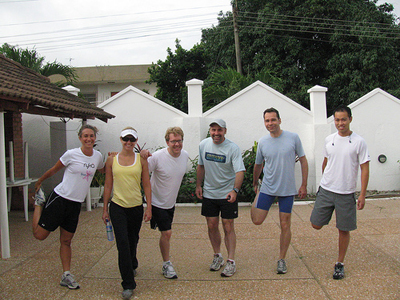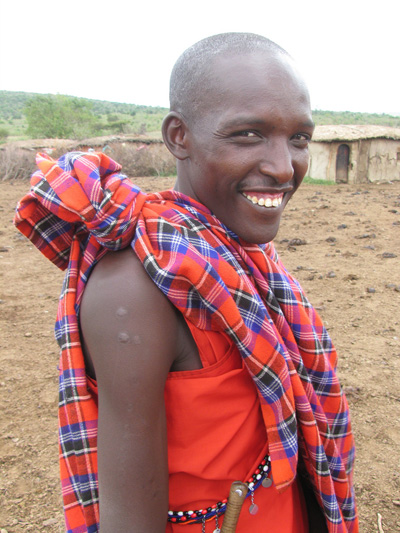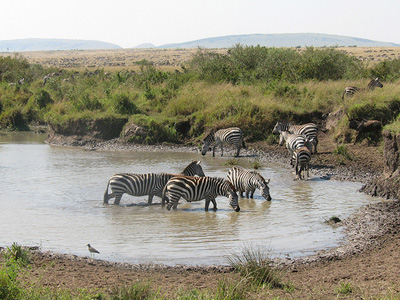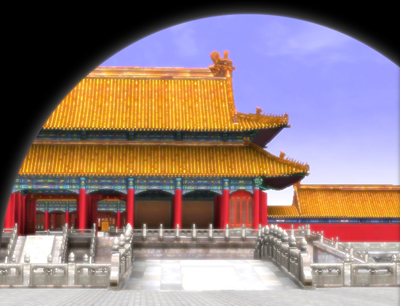But most of all, I missed YOU
I’ve been home from Africa just under a month. Thought I’d compile a list of things I miss and things I don’t.
Things I Miss:
- The Ghanaian handshake – Slap your hands together loudly (not a high five, just an aggressive bringing together of the hands for a normal handshake), hold until its a little awkward, then pull apart with a snap. I never quite got it and always felt horribly unhip trying to pull it off. But it was cool to be greeted like that.
- Laundered shoelaces – There was no laundromat nearby so we had some sketchy service that would come into our rooms and look for anything dirty. Before I figured this racket out they actually unlaced my running shoes (reddened by clay from dirt roads) and washed them separately. Anything for the upcharge, I suppose, though it was nice to have such gleaming white laces.
- Having taxis hail me – You never have to wave a cab down in Ghana, especially if you’re white. No matter where you are or how little you look like you need a ride, dozens of taxis will beep-beep beep-beep until you demonstrably tell them to go away.
- Saying “Ougadougou choo choo” – Ougadougou (wah·gah·DOO·goo) is the capital of Burkina Faso, the country to Ghana’s north. It is also the world capital with the most vowels in it. (Take that, Bosnia!) The nickname of the train service in and out of the capital is perhaps the most fun thing to say since I learned “trabajaba” in high school Spanish.
- Rear window car signage and business names – For reasons I still don’t completely understand Ghanaians are obsessed with naming their cars and shops with unintentionally humorous phrases from the bible. Or from something that sounds scriptural. Or not. “Be Holy Electrical Works”, “Dr. Jesus”, “I came naked”, “It wasn’t me”.
- Our prison economy – There were 10 of us at the guest house and we had only what we shlepped from home. Inevitably people forgot things and/or had items to swap. Though the Ghanaian markets offered lots of goods, there were certain things (meds, amenities, candy) that we had to barter amongst ourselves. It became a prison economy where mosquito wipes and vodka, rather than smokes, served as coins-of-the-realm.
- Dial-a-proverb – Emerson said “language is fossil poetry” which is a pretty accurate description of how laden the Twi language is with poeticisms and figures of speech. In fact, formal conversation consists of little but such turns of phrase. My interest in this characteristic of Twi became a game with my friend Yaw who would take any situation I gave him, call his pal who’s a master of Ghanaian proverbs, and come back with an appropriate phrase for the occasion.
Things I Do Not Miss:
- Restaurant service – No matter where we went, city or village, Italian, Chinese, Lebanese or Ghanaian, all meals took at least two hours. Even when we thought we were being sly by calling in our orders, the service was atrocious. We think this was because of limited staff and the fact that everything was made basically from scratch as soon as it was ordered. There were never enough menus to cover the table and food was never brought to us even near the same time. Often people were served thirty minutes after others. The food, however, was almost always exceptional.
- The Ghanaian noise for getting one’s attention – I understand that this is a perfect example of clashing cultural habits, but the staccato hiss that Ghanaian’s use to hail someone is just poison to Western ears. It sounds like a curse or worse, though admittedly it does get your attention.
- Lack of currency – Last year Ghana re-denominated its currency such that 10,000 old cedis would be equal to one new cedi. There were many reasons for this, but most signage has not caught up. That’s a surmountable, calculable inconvenience, but the reality is that no one ever has change. Hacking off four zeros means no one has the sub-cedi currency known as the pesewa. Merchants can’t break even small bills. I can’t tell you how many times I simply walked away either without the good I wanted or having given the merchant a sizable “tip”.
- Instant coffee – ’nuff said.
- Compact fluorescent bulbs – Don’t get me wrong. I’m all in favor of CFL’s, but Ghana has adopted them in a huge way. I don’t think I saw an incandescent the whole time I was there — which itself is fine, but CFL’s have indiscriminately and nakedly replaced every bulb everywhere. There’s nothing less comforting that a bright, uncovered fluorescent bulb. To make the switch, in my opinion, requires not just environmental consciousness but also some stylistic consideration.
- Racist South Africans – I met three white South Africans while I was in Ghana. The first was a racist drunk at a local Internet cafe who obsessively gambled online while smoking a hookah pipe. One night he was too drunk to realize that a shisha coal had fallen onto his laptop power supply. BOOM! It was like someone detonated a small firework. But he kept gambling on battery power. The second was a chatty guy at a hotel I was staying at in Accra. He would not take any hint that we did not want to talk to him at breakfast and insisted on letting us know his impressions of Ghanaians, this being his first visit. Let’s just say he used the word “savage” frequently. The third was a very pleasant, younger guy on his own on a business trip who made it clear that not all white South Africans harbor such deep-seated racism. I’m glad I met him.
- Dirt roads – My ass and nerves will never be the same. See the first part of this post.
- Diet Coke false advertising – Called Coke Light in Ghana, Diet Coke is obviously the focus of a massive marketing campaign. Billboards and signage are everywhere. And yet, no one ever has it in stock. It is a mythical elixir, something promoted but never distributed. My colleagues made fun of me for continuing to ask for it after a dozen failures, but by then it was a matter of principle.
- Under-table space management – We often ate out in relatively large groups. This required restaurants to push tables together. Inevitably seats would be placed right at the junction of two tables where no two legs could ever go. We saw this everywhere. It was almost as if the ability to arrange a table with chairs around it were more important than actually seating people there.
And yet, those cons are not nearly enough to make me not want to get back as soon as possible.
1¢ stage … huh?

Seems like there are more first-time visitors to my humble blog than there used to be. This might be a function of my linking Twitter updates to Facebook status, which if you do the math means that a lot of non-geek acquaintances are now alighting on Ascent Stage without a clue in the world what the hell is going on. Welcome, dearest friends!
Thought I’d take a brief moment to explain the name of the blog, something I’ve never rightly done.
You get some hilarious pronunciations and questions, especially when trying to give out the URL over the phone in an interview, say. “A cent, as in one penny?” “Ascent’s ‘tage, like Hermitage?” “Nascent Stage, you mean like an infant?” “ASS-ent stage, what is this porn?”
Simply, an ascent stage is the part of the rocket that goes up as opposed to being the one that breaks for going down. Sadly, in the post-Apollo era this has mostly been the only stage a rocket has. We ain’t landing anywhere with a rocket as long as we have a Shuttle.
Ascent stage refers usually to the upper half of the lunar modules that we put on the moon. The descent stage landed the astronauts (counteracting the moon’s weak gravity); the ascent stage put them back up to link with the Service Module whose rocket would take them home. Simple enough.
But why the name? What I’ve always liked about the concept of an ascent stage (in addition to the space dorkiness) is that it implies progress, upward motion, forward movement. But also a discrete point in time, or phase. There’s also something very slightly sad about it too, because to ascend means you descended at some point and you’re leaving something behind. (In the Apollo case this was the descent stage itself.)
There’s a classic image from the last Apollo mission where they left a camera specifically poised to capture the ascent back up to the orbiting command module — something which had not been done on previous missions. Not sure what it is but there’s something eerie and solemn about the footage that was captured. Two guys in a rickety polygon blasting off from a much more stable looking bottom half, which is now left to decay on the moon forever.
So, that’s kinda the rationale or feeling behind the name itself: progress, ascendancy, upward motion … tinged with mystery, loss, even desolation. My blog.
By the way, I’m considering a redesign. Input welcome. Via CAPCOM, naturally.
iPhone apps and Flickr nit-picking
The iPhone 3G and firmware 2.0 were released hours after my plane departed for Africa. It was source of great consternation for me, but it did force a kind of critical distance that I rarely have from new technology releases. What did I learn? I learned that I don’t care for critical distance from new technology releases.
I did eventually get to update the firmware on my original iPhone while I was over there, though there was virtually nothing I could do with new apps without good network access. Read: all the battery-sucking issues, none of the benefits. Since I have been back I’ve gotten a 3G, ceding the original phone to my wife who really needed it.
Here’s a list of apps that I’m liking a great deal.
- AirMe – Takes photos and uploads them automatically to Flickr with geo info (and weather tags, if you want). Works with Facebook too. Here’s a sample photo.
- Last.fm – Last.fm has always been great, but conceptually is so well-suited to a mobile device. No background apps on the iPhone means it won’t play while you do other stuff (ala the iPod), but them’s the breaks with Apple.
- MLB.com At Bat – Recently updated to include field and batter infographic overviews. Very well-designed and pretty timely video clip access make this indispensable, even when you’re at the game (especially so at Jumbotron-less Wrigley).
- Remote – Possibly the most useful app out there, which is probably why Apple got to it first. Creates a slick remote interface for iTunes and Apple TV’s on your LAN.
- Rotary Dialer – Because you can, that’s why.
- Shazam – Too-good-to-be-true app that identifies the title and artist of a currently-playing music source (like the jukebox at a bar). Pretty damn accurate and it offers instant links to buy the track. Great party trick potential trying to stump it.
- Simplify Media – Sets up a server on your machine that allows streaming access to your iTunes library wherever you (or anyone you permit) happen to be. This was cool when it was computer-to-computer, but the ability to stream anything from home to your iPhone is game-changing. Points to a day when the iPod has no storage at all and is just a thin network interface to your cloud of media. Highly recommended.
- Tetris – Slower to start than the free knock-off (now removed) Tris, but still mesmerizingly addictive. Takes a while to get used to manipulating blocks by finger flick.
- Twitterific – Not sure I’d even use Twitter if not for the desktop app Twitterific. The iPhone version is just as scrumptious, adding in some location features to boot.
There are a few apps I want to like, but just don’t. NetNewsWire is everything I want in an offline feedreader (with desktop and web synching!), but it is just dog-slow. Takes forever to load my feeds. AIM works fine, but instant messaging just doesn’t work with the no background app paradigm. You can’t give all your focus to chat.
And here are the apps I wish existed.
Backpack – I know 37Signals is all about lightweight web apps, but what I would love is actual offline access with synch.
SMS over IP – We can make phone calls with VOIP, but why not SMS? This may exist and I don’t know it, but with AT&T’s ridiculous messaging fees, why put anything over the voice network you don’t have to?
MarsEdit – On-the-go blog composition. Synching with desktop drafts would be yummy.
A native NPR app.
Google Earth – Why not? The video capabilities are clearly adequate and with the iPhone location abilities seems like a natural.
A great e-reader app. Kindle-screen quality with iTunes store breadth of access? Sign me up.
A stickie note app that synchs at least to a desktop app, preferably to a web app too. Most text pad apps for iPhone do too little (see all the to do list apps in the App Store) or too much (like Evernote, which I tried desperately to like). All I need is stickie notes. ShifD is promising, but right now you can only get it on your phone as a web app. Not ideal at all. If you know of something along these lines, please let me know!
———-
In other news, I’ve been using Flickr a ton lately. The more I use Flickr the more I love it, but it has prompted some critical observations:
- Video on Flickr is fantastic, but none of the video metadata comes over. This may not be Flickr’s fault, but it breaks the videos-are-just-long-photos thing organizationally.
- There is a “Replace this photo” option for stills that is very handy when uploading high-res versions of low-res originals. But this function does not exist for video. You have to delete and re-upload, losing all metadata and comments. Boo.
- Speaking of replacing, it would be great if there were a bulk replace function. Having to do it photo by photo is so … unFlickr.
- Flickr slideshows do not include video. C’mon!
- FlickrExport for iPhoto is indispensable, but it does not allow permission-setting (CC, etc). This is a very correctible limitation, it seems to me. (There’s a Facebook export from iPhoto that works just as smoothly).
- Speaking of iPhoto, why will it not copy video seen from a shared library like it will photos? Annoying!
Phew. Feels good to release some geek.
Slave to the cliché
Recently I’ve had occasion to reflect on the awful state of presentations. You see them all the time — in meetings, at conferences, shunted around via e-mail — and they sap the soul.
There are many aspects of crappy presentations, but I’ll focus here on only one.
From Wikipedia:
“Shave and a Haircut” featured in many early cartoons, played on things varying from car horns to window shutters banging in the wind. Decades later, the couplet became a plot device in the film Who Framed Roger Rabbit, the idea being that Toons cannot resist obeying cartoon conventions. Judge Doom uses this to lure Roger Rabbit out of hiding at the Terminal Bar by circling the room and tapping out the five beats on the walls.
Here’s the scene from the film:
In film there’s a term called “mickey mousing” which refers mostly derogatorily to the underscoring technique of using music to exactly ape what’s seen on screen. Early cinema used it all the time, as the medium was new and unexplored. Examples include playing a sea shanty when a ship floats into view or mimicking the slicing of Janet Leigh in the shower in Psycho.
As with any technique used smartly it had its place, but mickey mousing quickly devolved into caricature as a stock device in cartoons (hence the name). Music in cartoons, usually orchestral, almost always reinforces in the most literal way the action on screen. Which is fine, because cartoons are meant to be laughed at.
But most presentations are not meant to be laughed at — at least not all the way through — and this is a problem. The idea behind mickey mousing pervades most presentations. That is, presenters often attempt to reinforce what is being conveyed in one medium (usually bland bulleted text) with another (usually hideous clip art of illustration).
This is almost always a bad idea. And the reasons are many.
First, it distracts from the real message. Presentations should be about the presenter, not about what’s on screen. If there is an image on screen it should complement, even slightly modify what the speaker is saying, not mindlessly illustrate what the bullets say. (Which goes the same for the bullets too: if what you’re saying is on the screen why even present at all?)
Second, mickey mousing in presentations demeans the intelligence of your audience. Do you really need to put a clip art image of an airplane next to your point about airborne supply chain routes? Does this make your point more compelling? Might it not say something more about the point itself? Or your confidence in the point? Or maybe just your confidence as a presenter? Most audiences, if not snoozing, are smart enough to ask these questions themselves.
And sometimes bad graphics have much direr consequences.
There are plenty of resources out there to help you make a better presentation. If you want an example of an extraordinary interplay between what’s being said and what’s being shown, have a look at Dick Hardt’s Identity 2.0 talk from OSCON 2005.
My colleague Ian Smith has put together a great overview of strategies for making yours more persuasive and entertaining. Highly recommended.
Maybe the simplest piece of advice is to ask yourself, is my presentation a deliverable or a performance? That is, is it meant to be read, studied, and digested (a solitary activity) or is it meant to sketch broad themes to many people and connect the authority of the presenter with the validity of the material?
These two things — a document and a presentation — should almost never be the same thing. They can cover the same material, but throwing a presentation made for reading up on the screen is like projecting the score of a symphony in the orchestra hall in lieu of music.
Tom bo li de say de moi ya, yeah Jambo Jumbo!
At the end of my assignment in Ghana I took a short safari on the Masai Mara in southern Kenya. It was extraordinary.
But it was hell to get to in every conceivable way. First we waited for seven hours in a cramped, hot hovel of a concourse while unspecified repairs were made on our plane. By the time we boarded at 4 AM we were too out-of-our-minds tired to care what possible repair could take that long and not require a full cancellation.
Arriving so late in Kenya we had to high-tail it out of Nairobi to make it to the Mara by nightfall. I didn’t realize why this was such an issue, until shortly after entering the Rift Valley and saying goodbye to any semblance of paved roads. Our driver/guide would have been maniacal in any vehicle, but the one we were in was particularly death-trappy. The speedometer did not work and yet every single warning light on the dash was a constant glowing red. I suspect the speedometer had been disconnected to get around a governor that the minivan supposedly had installed by the tourist commission.
Kenyans jocularly refer to the bumps of riding on pothole-ridden dirt at breakneck speed as “an African massage”. Which was funny for, perhaps, 100 yards. And then night came and the animals with it. It was exciting to see a herd of zebra in the middle of the road. Exciting for a second before realizing that my first experience with a wild animal might involve it coming through the windshield in a bloody heap. We actually rear-ended a wildebeest at one point.
Ah, but it was all worth it. The safari itself was a relatively last-minute, budget affair after our official assignment. Yet we were right in the middle of what’s known as the Great Migration when millions of animals (and their predators) move from the savanna of the Masai Mara in Kenya to the Serengeti in Tanzania.
You see so many animals in such a natural state in such a small amount of time that you start to think it normal, say, to have a group of monkeys invade your tent and steal your food. (Which they did, the little bastards.) But then you realize it is normal. Humans are just used to zoos, and National Geographic, and urban life (mostly) devoid of wild game.
We saw zebra, impala, baboons, huge rabbits, bat-eared fox, grasscutters, wildebeest, Topi antelope, elephants, giraffe, vultures, hyland cattle, African buffalo, the rare black rhino, the secretary bird, vervet monkeys, Thompson’s gazelles, warthogs, ostriches, lions, hippos, mongooses, hyena, Marabou stork, eagles, guinea fowl, and one very elusive leopard.
Here are some glimpses from the full set of photos and video.
And now, the payoff. “Hello” in Swahili, the main language spoken in Kenya, is “Jambo!” which is a hell of a lot of fun to say. And it’s even more fun to say when you realize that it is what Lionel Richie was actually saying while rocking out during All Night Long. I can’t seem to find a translation of the full line (in this post’s title) so in the meanwhile, do yourself a favor and watch the video.
Africa is a way of thinking
I came to some startlingly common sense realizations while in Africa. For instance, its now clear to me that sustainable environment practices and Africa are inextricably linked. They aren’t separate matters or concerns or causes. To act on one is to act on the other.
Here’s the obvious part. Africa — and the entire “Global South,” as it is often called — stands to lose the most from planet-wide environmental deterioration. The fate of Africa has always firstly been tied to the environment. Even when you subtract out all the man-made horrors that Africa has seen life on the continent is shaped in deep ways by the ecological, geological, and meteorological hand it has been dealt. Subsistence agriculture, wars over limited (or precious) resources, lack of access to coasts, the range of the tsetse fly — all these things define life more immediately than the environment does (for now) in other places.
But there was insight too. A lesson, you could say, that the first world can learn from the third. Sustainability is a way of life for Africans. They don’t think about it as such. It isn’t a campaign or a movement like it has become in the West, but it is evident everywhere, woven into everything Africans do.
Simply put, Africans live with resource scarcity. They have not experienced consumption out of whack with production because it has never been a possibility.
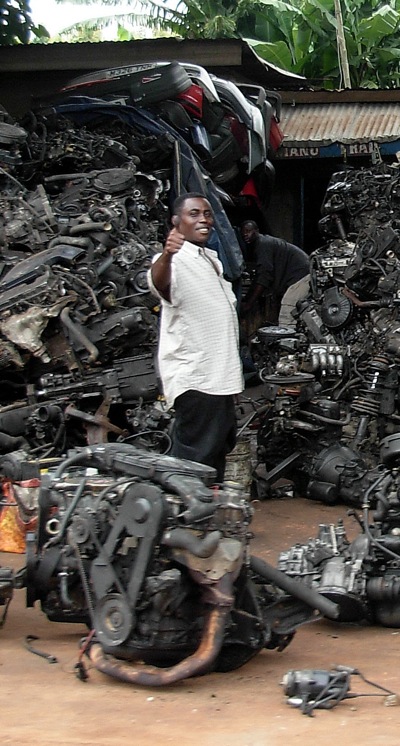
For every place you see selling cars you see five places recycling every possible component of the cars. Usually its for repair, sometimes it is to create something utterly different.
Or take tro-tros, the ubiquitous, horn-happy minivans that criss-cross every part of Ghana moving people more efficiently than a bus system every could. It’s a totally decentralized, mostly private group taxi service. Mass transit on an unbelievable scale with no set routes at all. Need a ride? Flag a tro-tro. You’ll get where you’re going. (Not unlike hailing a “taxi” in Russia, though there rides are less frequent, less capacious.) While tro-tros are almost universally decrepit, smoke-belching buckets of bolts, the system as a whole is by far more environmentally friendly than private cars or even a fleet of taxis.

One fact of life in Ghana is the unreliability of centralized services. The electricity grid, for example, cuts out a few times every week. Just … off. Usually mid-day when it is hottest out. Yet this is not nearly as disruptive as it would be in the West. Partially this is just an attitude of resignation; that’s just the way it is. But because it’s the norm most places simply do it themselves with generators on standby (or have ways of manually doing what would otherwise be electrically-powered).
There’s no central water supply either so in urban areas private gravity tanks (or nearby streams) provide running water. The explosive growth of mobile phones is in part fueled by a lack of reliance on a centralized grid of services. It’s obviously not industrial age mega-infrastructure but more like modular, emergent services — build as you go, bottom-up. Like the Internet itself, basic services are built to work around outages.
To a Westerner this seems like privation but, looked at another way, it is a built-in constraint on excess usage. Self-sufficiency isn’t radical; it’s practical. And self-sufficiency naturally requires an intimate knowledge of one’s own patterns of consumption. You use what you have and nothing more. It ain’t rocket science.
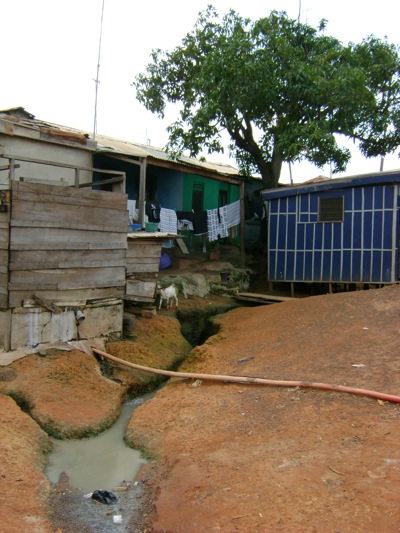
So why is this a lesson? Certainly I’m not claiming that open sewers or power outages are the way forward. Nor should it be taken to mean that Africans are somehow immune to over-exploitation of resources.
Yet, Africa provides an example of what a society might look like that has so totally internalized sustainable living that it informs everything it does. Africa as a behavioral template, not a developmental one.
There are many paths that lead to this way of living within one’s means. You can choose to do it or you can be forced to because all your other options have been exhausted. Most of Africa has no other choice.

It took me a while to realize how pragmatic the idiosyncrasies of daily life are in Ghana. After first I thought the army of vendors on the road was a nuisance. They’re not “roadside” but in the middle of the road, often long lines of people selling the exact same thing — tissues, water, power strips, mangos, anything. (Even the mayor wants them off the road.)
But actually it makes a ton of sense because traffic is often such a mess. It’s like one huge drive-through mall. In the lingo of a typical consultant: they’ve monetized gridlock. It’s efficient and practical, such as at the toll stop pictured above. I’m not arguing for in-road vending so much as noting that what seems crude is often entirely sensible, bordering on ingenious.
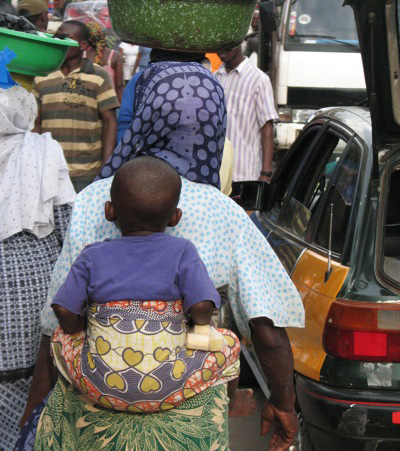
It’s hard for non-Ghanaians not to do a double-take when they see women carrying staggering loads on their heads, but once the shock wears off you realize, wow, that really is efficient. The arms are free to do other things while the entire frame of the body distributes the load atop the spinal column. Also, it makes for good posture.
But the most practical form of carriage is the way babies are swaddled. Just a single sheet wrapped around the child who’s straddling the mother’s back and literally sitting atop her butt. I never once saw a child squirming or screaming and the moms looked similarly non-plussed. Again, the arms are free to do whatever.
What do baby swaddling and sustainable living have to do with one another? They’re both examples of deep-rooted pragmatism. It seems simple, even backwards sometimes, but the way of life I saw both in Ghana and Kenya was firstly about solving everyday problems. It’s largely coincidental that many of these problems are matters of production and consumption — the very basis on our misaligned relationship with the planet.
Let’s take some inspiration from Africa. It’s a plentiful, renewable resource, after all.
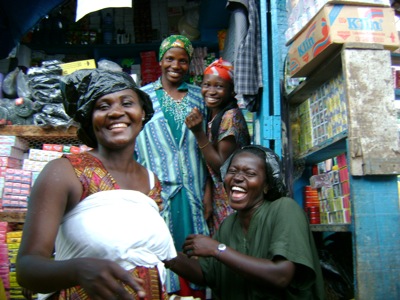
A workshop on high performance computing in the humanities
A few years back I mused, where are the humanities applications for supercomputing? Well, we’re going to try to answer that.
Announcing a special one-day workshop to brainstorm uses of high performance computing in arts, culture, and the humanities. If this is your thing, please consider attending and/or passing it on.
A Workshop on Humanities Applications for the World Community Grid
On October 6, 2008, IBM will be sponsoring a free one-day workshop in Washington, DC on high performance computing for humanities and social science research.
This workshop is aimed at digital humanities scholars, computer scientists working on humanities applications, library information professionals, and others who are involved in humanities and social science research using large digital datasets. The session will be hosted by IBM computer scientists who will conduct a hands-on session describing how high performance computing systems like IBM’s World Community Grid can be used for humanities research.
The workshop is intended to be much more than just a high-level introduction. There will be numerous technical demonstrations and opportunities for participants to discuss potential HPC projects. Topics will include: how to parallelize your code; useful tools and utilities; data storage and access; and a technical overview of the World Community Grid architecture.
Brett Bobley and Peter Losin from the Office of Digital Humanities at the National Endowment for the Humanities have been invited to discuss some of the NEH’s grant opportunities for humanities projects involving high performance computing.
If attendees are already involved in projects that involve heavy computation, they are encouraged to bring sample code, data, and outputs so that they can speak with IBM scientists about potential next steps for taking advantage of high performance computing. While the demonstrations will be using the World Community Grid, our hope is that attendees will learn valuable information that could also be applied to other HPC platforms.
The workshop will be held from 10 AM – 3 PM on October 6, 2008 at the IBM Institute for Electronic Government at 1301 K Street, NW, Washington, DC. To register, please contact Sherry Swick. Available spaces will be filled on a first-come, first served basis.
Rocks and hard places
In Ghana I took a trip with Margaret to her mother’s home village of Tanoboase (tah·no·bo·AH·say). It’s dirt poor, centered around the local voodoo shrine, and governed by a chief — in other words, a microcosm of what makes Ghana unique, world’s away from the urban centers of Kumasi and Accra.
Tanoboase is a good example of a town that would seem to be able to pull itself up a level. It is on the main artery from Kumasi to Tamale and it stewards a stunning historical-natural eco-tourism project. It’s close to the Boabeng-Fiema nature sanctuary (teeming with monkeys treated as children of the local gods) and it is near an amazing set of waterfalls.
And yet, Tano (as it is called) hasn’t been able to capitalize on the tourist dollars that overflow to similar areas near the slave sites of Cape Coast.
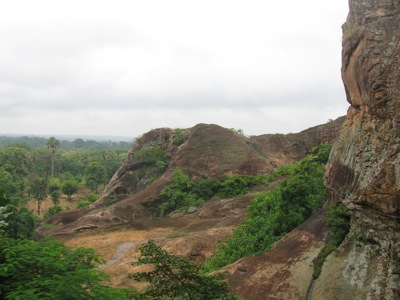
Boase means ‘under the rocks’ and the landscape up in this region is forest punctuated by crazily-shaped summits popping out from the trees. The form of the rock — caves, natural bridges, smoothed planes, boulders balancing on points — suggests some powerfully-erosive water flow through here eons ago.
This all makes for arresting views so it wasn’t a surprise to learn that there’s a Catholic (Benedictine, to be precise) monastery nestled into a nook. Kristo Boase is a quiet little operation of only about a dozen men (a convent is slated to open next year). Mostly it is prayer and agriculture in a secluded, inspirational setting. The monks don’t observe silence but the place is supernaturally silent. You’re as likely to hear a monkey screech as anything else.
One especially interesting point for me was a visit to the monastery’s cashew orchard. I’ve written previously about the fascinating biology of the blister nut, so imagine my delight at being able to see acres of them on the tree. They don’t just eat the cashews — no, this is a Catholic monastery: they distill the nuts into a potent liquor.
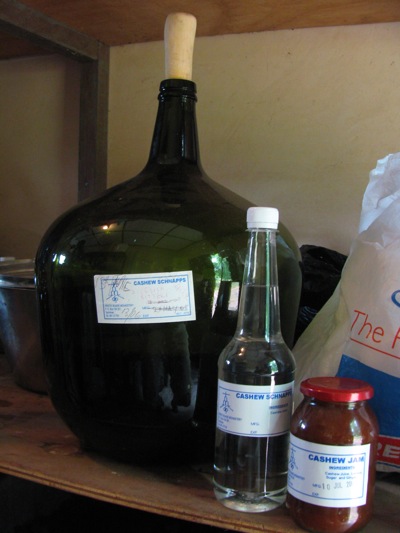
It’s cashew schnapps. And it is odious. But I bought a bottle, as well as cashew jam. I’m a supporter of the blister nut.
From Kristo Boase we headed a short distance into the town of Tano — and by town I mean about a half mile of variously-dilapidated structures hugging the Tamale road. This was Margaret’s true homecoming. She had not been back to visit in 25 years, but before we were all out of the car family came running up to greet.
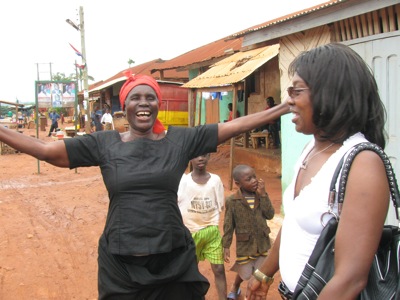
Margaret’s aunt herded us around from villager to villager. I couldn’t keep track of who was related and who wasn’t — but then, maybe that wasn’t even a distinction anyone made. It was as if the Chicagoan Margaret had just been up the road at the next village for a while.
Lots of furious chatting in Twi, lots of stares, but no one at all visibly perplexed at my radiant alabaster skin. I was with Margaret.
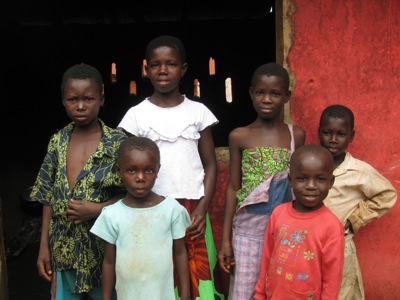
Tano’s two claims to fame — and sources of tourism, such as it exists — are the local voodoo shrine and the sacred grove, closely connected to one another. The shrine is an odd thing. It houses a dark room and a tabernacle-type bowl said to contain Taakora, head of the Akan nature gods. It’s run by a fetish priest and you’re allowed in for a small fee. Margaret would have none of it and insisted on staying outside the “evil” place. I had to go in, of course. Honestly I couldn’t see much — it was deliberately creepy and shadowy.
It’s remarkable how seemingly unfazed Ghanaians are by their overt, omnipresent displays of Christianity and their reverence for hyperlocal animist gods. Something like 70% of Ghanaians are Christian, with the remainder Muslim. Yet nearly all villages have some sort of local spirit who receives supplication and is the threat behind frequent curses being placed on people.
Margaret’s brother was cursed by a villager years ago for a perceived slight. Her family — singularly Christian — took no heed. Her brother later had surgery on his throat for some ailment that the villagers all took as proof of the fulfillment of the curse. Rather circular logic, but there it is. The simple fact is that most Ghanaians pray to a Christian God while respecting what they call “small gods.”
As is customary when visitors come to town we met with the local chief, the Tanoboasehene. He remembered Margaret too and even gave her a hug, which was odd since protocol requires you to speak to the chief through his assistant. Hugs apparently do not contradict the prohibition against addressing the chief directly.
Also a matter of custom is presenting the chief with a bottle of liquor, usually schnapps. (Hey hey, the blister nut saves the day!) A small quantity is then poured on the ground in remembrance of villagers past. Yes, this is precisely where the African-American “tradition” of “pouring one out for my homies” originated. You won’t be surprised to learn that in Tano it was done a bit more reverentially than in America.

From the shrine you depart for the Tano Sacred Grove, the real home of Taakora as well as the site of the origin myth of the local Bono people. It is also the location of a last stand of local Akan during the tribal wars and slave raiding of 17th century.
The grove is certainly treated as sacred. Everything in it is protected (hence its eco-tourism designation) and there is a vaguely temple-like atmosphere walking in the semi-darkness of the vegetation and overhanging rocks. There’s myth and ritual at every turn. (Apparently virgins who enter the grove to fetch water will go blind.) It can be plain eerie.
Once you make it up the rocks and peer out across the tops of trees you realize that, religious or not, it is a rightful source of pride for the locals.
Margaret of course wanted to know what I made of all of it. She wanted to know how we could help jumpstart tourism, anything to help. I’m not an expert on tourism of course, much less rural African economic development, but it seems to me the problem is basically infrastructural. Getting to Tano is a chore, if not downright risky.
The “main artery” is barely paved and has lots of lethally-overloaded trucks traveling at incomprehensible speeds. Most tourists hug the coast, visiting Elmina, Cape Coast, and possible Kakum National Park. But there is a subset that ventures into the Ashanti inland empire and this would be Tano’s target group — if only they could get there.
The problem is the road. Open up the bandwidth and good things can happen. It’s the network economy of the industrial age: connectivity doesn’t just move stuff about, it multiplies the value of stuff. Without dependable physical access Tano can’t participate in the economic revitalization of the rest of the country.
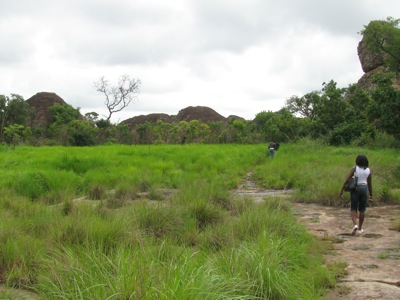
But Tano isn’t going anywhere. Like most villages cut off from the grid of urban services, they’re largely self-sufficient. And the Sacred Grove is obviously enduring and legally protected to stay that way. The road will come.
A chosen few

Preparations for next year’s South by Southwest festival are underway and the panel picker is live. If you love me you’ll take a moment and vote for the two panel proposals that I’ve had a hand in.
The panel picker is a way of giving voice to the community at large about what the actual lineup of speakers should be. It isn’t wholly a popularity contest as the editorial board and staff have a hand in what finally gets selected, but feedback via the picker is a large part of it.
So here they are.
The Street is a Platform
Cities abound in data generated by their inhabitants (virtual worlds, city websites, online media) and created automatically by systems or monitoring. How does this online manifestation of the city interact in tangible ways with urban design and informal urban constructs? Is there such a thing as “the street as platform”?
This is a joint proposal with the inimitable Andrew Huff. And credit where it is due: this topic is almost wholly informed by this amazing post by Dan Hill.
Entrepreneurship in the Belly of the Beast
Small is beautiful at SXSW. From Getting Real to starting up, the ethos is largely anti-large corporation. This attitude overlooks one of the most satisfying professional accomplishments: doing your own thing while working for The Man. This presentation uses examples to offer strategies for making the corporation work for you.
Subtitle: Why Working for a Gigantic Company Isn’t As Bad As SXSW Would Have You Believe. This is my first (possibly last) submission for a solo “panel”. Just me on stage, a single target for the barbed arrows of the audience.
You do have to create an account to vote, but that’s not much to ask for a lifetime of my eternal gratitude, a firm handshake, possible hug, and sip of my drink next time we meet, is it?
A happening in China
Meanwhile back at the ranch …
The launch date for The Forbidden City: Beyond Space and Time is now final. No, really it is. October 10, 2008. Beijing, China. See you there or in-world?
http://www.beyondspaceandtime.org
Don’t have any idea what I’m talking about? Well, it has been over two years.
UPDATE: The virtual world is live and can be found at www.beyondspaceandtime.org.

